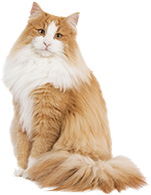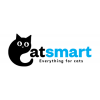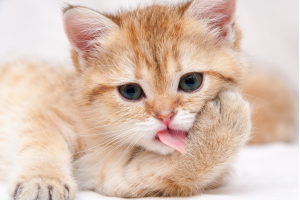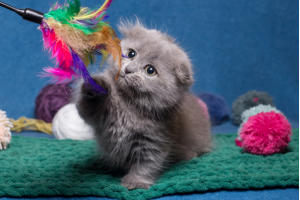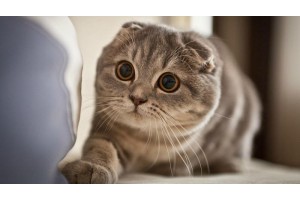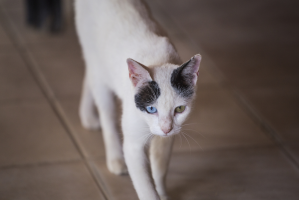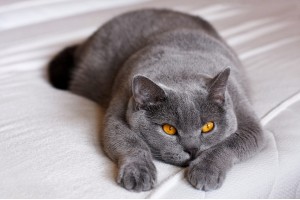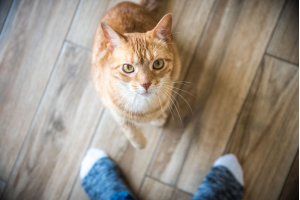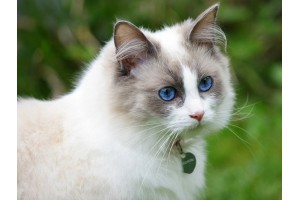How to help cats gain weight?
In order for you to understand how to tackle feline weight problems, you must first understand how to properly feed a cat. After all, cats, like humans, do not become underweight or obese if they are eating a healthy, species-appropriate diet with their caloric intake properly balanced with their caloric expenditure.
Please note that we used the word “healthy” in the above statement. People and animals can, indeed, maintain an appropriate weight even when eating an unhealthy diet. So, to that end, it is very important to understand that even if you have a cat that is at an appropriate weight, that does not necessarily mean he is eating a healthy diet.
Is Your Cat Overweight?
You may be wondering if your cat really is overweight. Generally speaking, humans tend to think that a chubby cat is ‘cute’ and ‘healthy’ when, in reality, the cat is carrying around too much fats.
Note that you should be able to easily feel the ribs with just a slight fat pad over them. Cats should also have a waist when viewed from above. They should not have any fat pads over their shoulders and if you pick up their skin, you should not feel thick fat underneath.
Their top line (backbone and back of the head) should be well-muscled and not terribly prominent (too thin) or hard to feel (too fat).
Hepatic Lipidosis (Fatty Liver Disease)
This is the most common metabolic liver disease of cats. Cats that go longer than ~3 days without eating, for any reason, are in danger of developing this serious, and often fatal, disease. Even though thin cats can end up with hepatic lipidosis, overweight cats are much more prone to experiencing this disease.
Feeding a high-protein, low-carbohydrate diet helps keep cats at an optimal, healthy body weight and, in turn, makes them less likely to end up with fatty liver disease.
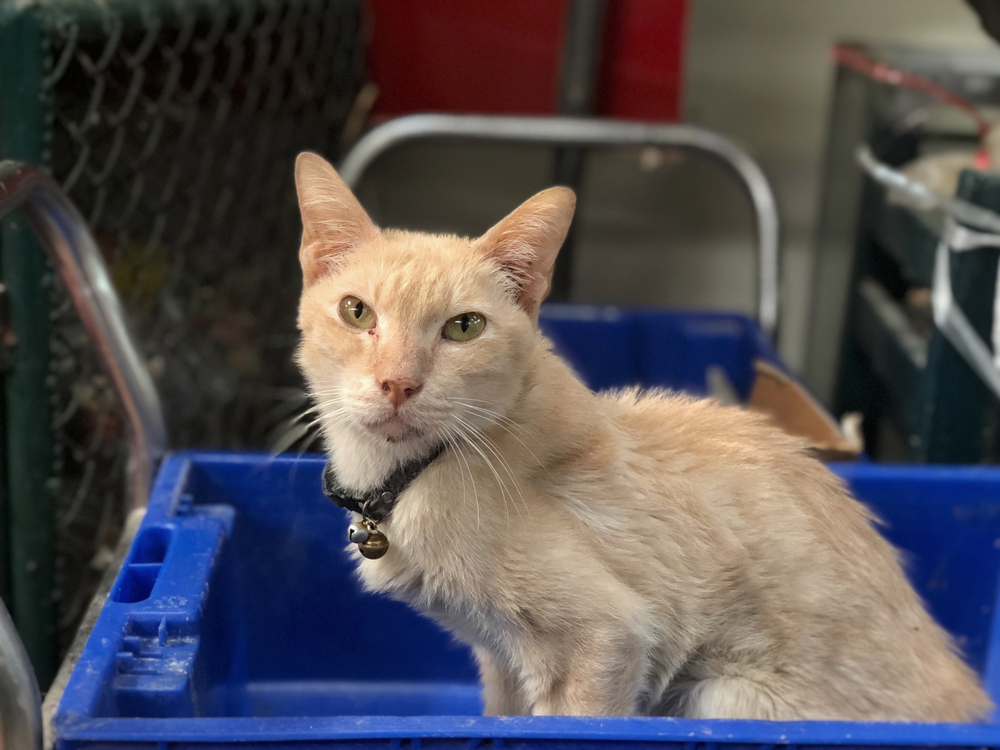
So, How Do I Fatten Up My Cat?
High protein cat foods
The lack of recognition of fat versus muscle is a very common problem that we see. People must understand that there is a big difference between lean muscle mass and fat. We often hear about people feeding dry food to “fatten” their cats up. And, unfortunately, that is exactly what high carb food does – it adds too much fat to the body. These cats would be much better off on a high protein, moderate fat, low carbohydrate food which would promote lean muscle mass instead of fat deposits. Do not make the mistake of ‘killing them with kindness’ and feed your cats right into obesity.
This is a very important point: The goal of weight gain for any living being is gain of fat while maintaining, or even building, muscle mass. However, since our cats are not going to the gym, we aim for simply a maintenance of muscle mass. Overall protein malnutrition can result in the loss of muscle mass.
Dry food tends to be packed with more calories than wet food so you may increase the dry food portion if your cat is underweight. However, look for foods with high proteins with higher fat. Do be careful though, the food must be high in quality with proteins and fats from animal sources, rather bulked out with large amounts of plant material. Try to avoid foods with corn, wheat, soy and by-products, since they are junk ingredients. They may make your cat feel full, but they won't help her gain weight.
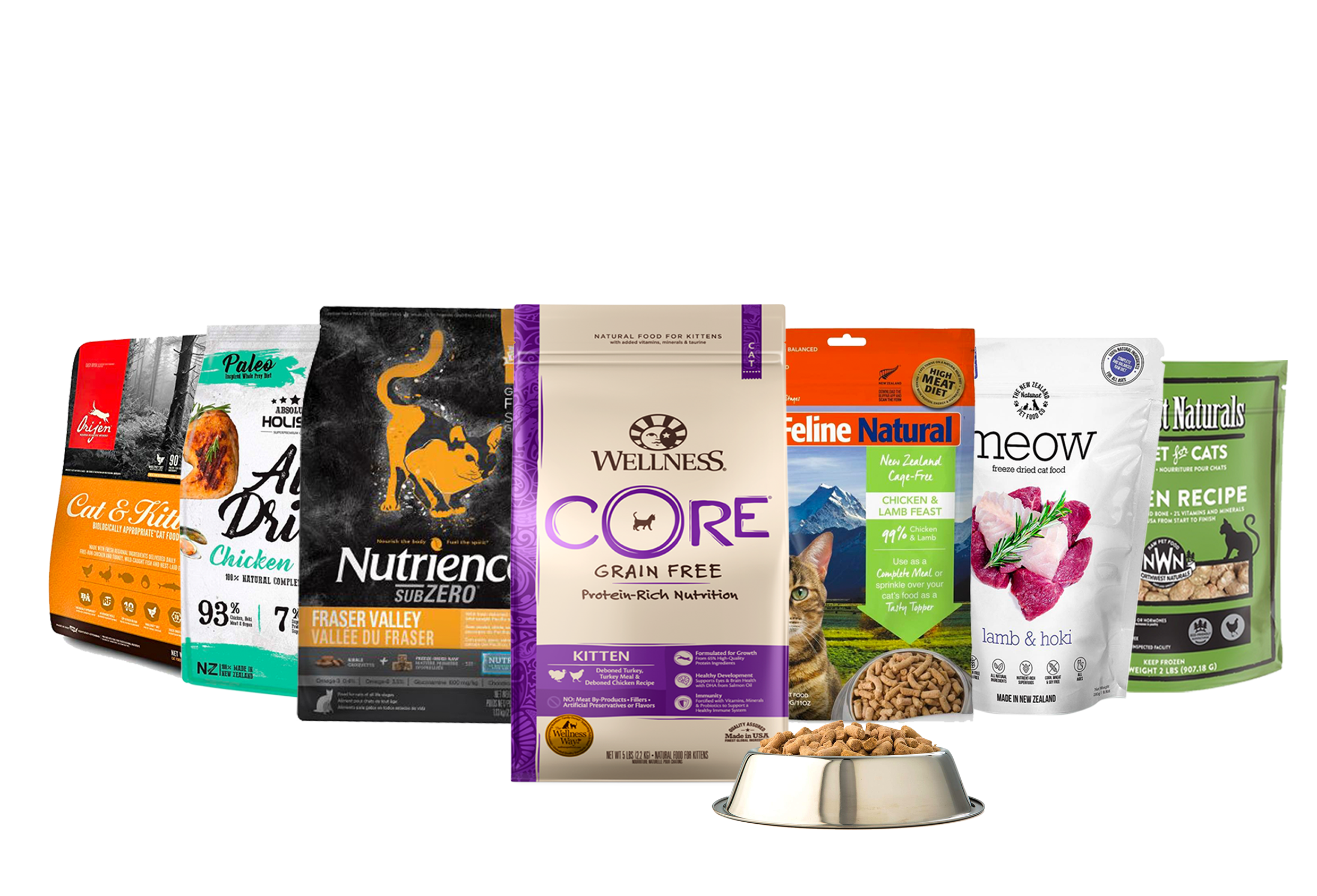
Cat Foods we recommend for weight gain:
Nutrience Sub-Zero Fraser Valley Formula -
First 2 ingredients are deboned chicken & deboned turkey. First 13 ingredients are animal proteins, not plant proteins. Contains crude protein not less than 42%.
Orijen Cat & Kitten -
First 15 ingredients are animal proteins, not plant proteins (Not bad aye). Made with 90% premium meat ingredients, featuring a protein level of 40% which closely replicates the natural feline diet.
Feline Natural –
This diet consists of a minimum crude protein of 48% and minimum crude fat of 31%. Also, check out their full list of ingredients: Chicken, Lamb Heart, Lamb Kidney, Lamb Liver, Lamb Blood, Flaxseed Flakes, New Zealand Green Mussel, Dried Kelp, Taurine, Vitamin E Supplement, Magnesium Oxide, Zinc Proteinate, Copper Proteinate, Manganese Proteinate, Thiamine Mononitrate, Vitamin D3 Supplement, Folic Acid. Now some might question - is copper sulfate safe for cats? Copper is an essential mineral for cats - and all living things. In order to legally claim a product is “complete and balanced”, a cat food must contain the right amount of copper to meet AAFCO1 nutrient profiles. As long as copper confirmed through testing by the manufacturer is in a healthy amount, your cat should be considered safe. Thiamine mononitrate might look suspicious but it’s actually vitamin B1.
Absolute Holistic Air Dried -
Contains 93% Meat & organs, 7% produce & supplements. Though they might not have the highest crude protein level compared to some listed here, we like the fact that Air Dried is as convenient as dry food but also as nutritious as Freeze Dried.
MEOW Freeze Dried Cat Food -
One of our personal favourites and also a very underrated cat food. Contains a minimum crude protein of 43% but the best part of this cat food is their...ingredient list: Chicken, King Salmon, Chicken Heart, Chicken Liver | Chicken Gizzard | Chia Seeds | Kelps | NZ Green Lipped Mussels | NZ Manuka Honey | Rosemary | Organic Virgin Coconut Oil | Hoki Liver Oil | Taurine.
Simply delightful. Everyone, a round of applause please.
Northwest Naturals Freeze Dried Cat Food -
Contains crude protein not less than 50%, pretty high we must say. A true carnivore diet.
Wellness Core Grain Free Kitten –
A protein-rich, natural, grain-free nutrition. Contains crude protein not less than 45%.
Here are some wet foods brands you can consider to complement the foods listed above:
Nurture Pro Longevity, Monge Natural Canned Food, CIAO Canned Food, Aristo Cat Canned Food, Zealandia Canned Food, Monge Delicate.
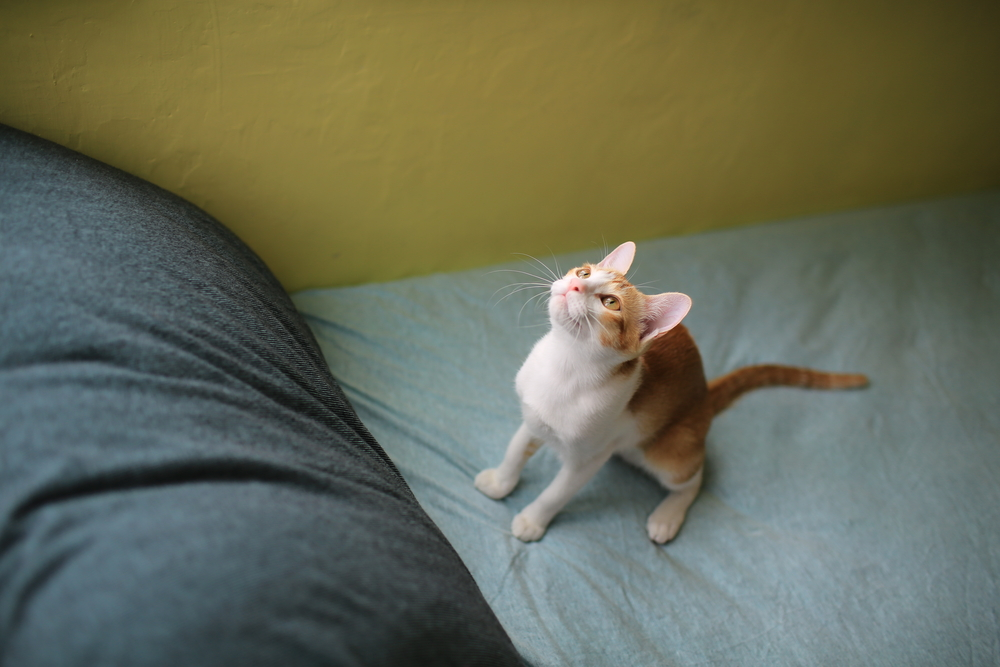
Free Feed your Cat -
Free feeding is not highly recommended since it leads to lazy feeding habits and eventually obesity. If your cat is underweight however, then it’s perfectly acceptable to leave a meal out all day for them to pick at. Wet food is more appetising than dry food. We recommend wet food 3-4 times a day while you are trying to increase his weight as well as leaving dry food out for your cat to nibble in between meals.
Switch To Kitten Food –
Kitten food might be a better meal choice for cats that need to gain weight. Kitten diet contains higher protein and fat compared to adult cat food, so focus on getting grain-free and high-protein kitten food that has NO fillers. Kitten food can be good for cats who are either picky eaters or aging cats who need something softer to chew on.
Heating up your cat’s food to body temperature can be enough to increase his appetite as warmer food tends to produce a stronger smell.
Give Your Cat Some Milk -
If your cat enjoys milk and suffers no side-effects from it, then it can be considered a healthful treat. How much milk and how often depends on your cat's overall diet plan. If she is overweight, then milk, like any treat, should be fed only occasionally. Give just a little, such as a teaspoon or two and maybe use skim or 2%, versus whole. If she is underweight, then more frequently, in greater quantity and/or higher fat content is fine. Remember that milk should only ever be used as a treat and never a substitute for proper nutrition.
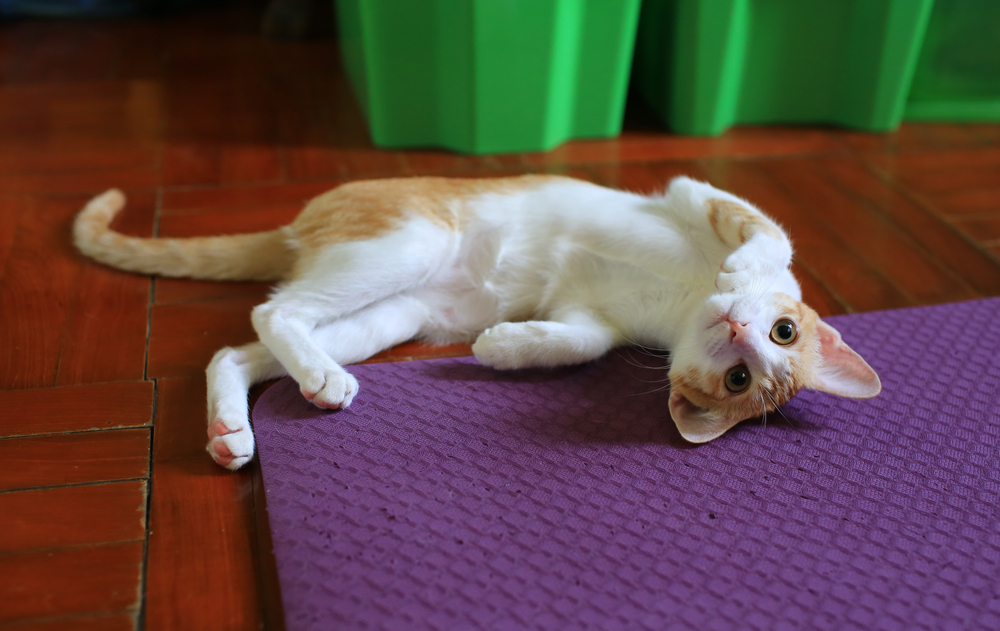
Use Tasty Treats -
Treats should make up a maximum of 15% of a cat’s daily calorie intake. Since they’re super rich and cats’ will almost always prefer them over their regular food, you do need to take some caution with how much you dish out. There are plenty of treats your cat will go wild for available out there.
Use Supplements -
If your cat doesn’t like cat food because of the flavor, then it’s time to switch it up by adding more taste to it! Add any type of fish oil, whichever is your cats’ favorite. The oils also help with weight gain as they contain a substantial amount of needed calories and fat. If your cat still doesn’t like his food, then you can try specialty-made gravy or toppers for cats. Adding protein-rich treats between his meals is great, too!
Offer Human Food -
Human food such as cottage cheese, egg whites, or yogurt are recommended since they have extra calories and can be a yummy treat to help fatten your cat.

